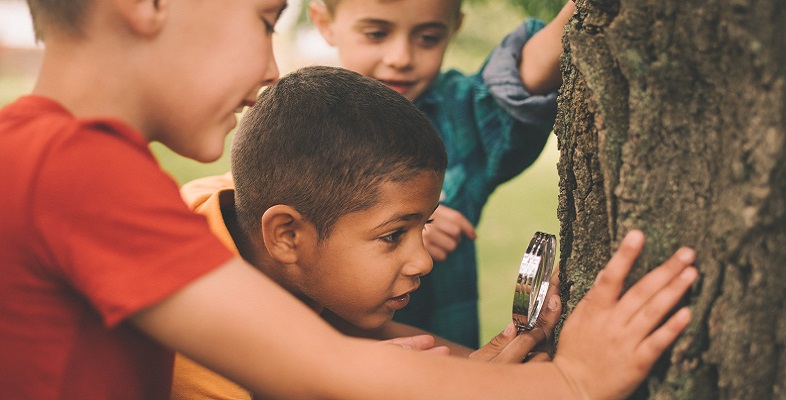3 Discovering children’s ideas
If we are not aware of the ways in which children think, then leading them towards ideas that are accepted as scientific fact becomes a difficult task. Children can be very tenacious in holding onto ideas from their prior experience. Their ‘alternative frameworks’ may work alongside or, in some cases, be in opposition to accepted scientific ideas, preventing the development of scientific understanding. Thus, it is necessary to elicit children’s prior learning and alternative frameworks so we can help them to progress.
From your own experiences, can you think of any instances of such ‘alternative frameworks’? For example, some children think that as the Sun moves in the sky through the day, it is the Sun that orbits the Earth.
After you’ve considered these frameworks, move on to the next activity below.
Activity 9 Techniques to discover children’s ideas
In addition to using concept cartoons, what other approaches could you use to help you to discover children’s ideas?
Comment
The techniques described below can all help.
1. Using pictures
Drawing or annotating diagrams does not rely on language skills and can reveal understanding that cannot be revealed through questioning.
For example:
- Draw what’s inside your body or what happens to food after you have eaten it.
- Use arrows on this diagram of a flower, the Sun and an eye to show how we see objects.
- Draw a plant to show how it gets its food.
- Draw what happens to a drop of blood leaving the heart, visiting the big toe on its journey.
- Use arrows to indicate the forces acting on a ball after it has been kicked; compare this to a ball rolling across the floor.
Activities that involve sorting or selecting pictures can be employed with all children, but may be particularly useful for younger children or pupils with some special educational needs (SEN).
2. Creative writing or drama
For example:
- Pretend you are a water particle, and describe what happens to you as you go from being in frozen water to evaporating.
- What would happen if we got our food like plants get their food? What would happen if friction was switched off?
- Pretend you are a drop of blood, and describe what happens to you as you go around the body.
3. Sorting activities
These activities are useful to find out what criteria children use to classify objects. Real objects or pictures can be used. For example:
- Sort these things/pictures of things into living, non-living, once living.
- Sort these things/pictures of things into solid, liquid, gas.
4. True/false statements
True/false statements can be used to reveal misconceptions. To use these, you will need to know what the common misconceptions or confusions are and ensure they are included in the statements.
5. Predict and explain
Give children a situation, and ask them to predict what will happen next, explaining their reasoning. For example, you might ask young children to predict what will happen when objects made from different materials are placed in water. This will reveal what ideas they hold about floating and sinking.
6. Exploratory play
Allowing children to play and explore can engage them and help us to identify children’s knowledge, understanding and skills prior to adult-led learning. For example, playing outside, looking for evidence of seasonal changes, or playing with soil and seeds.
When trying to discover children’s understanding of scientific concepts, the most suitable approach to use will depend on the age of the children and the concepts you want to find out about (Pine et al., 2001).
